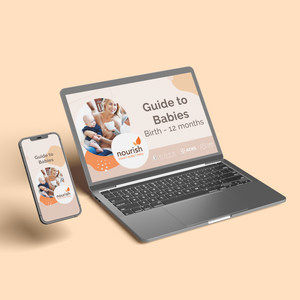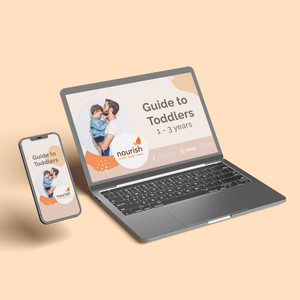Key points
- Fontanelles allow for the brain to grow.
- You cannot hurt your baby by touching their fontanelle, patting their head or washing their hair.
- The posterior (back) fontanelle closes at around 2-3 months of age. The anterior (front) fontanelle closes between 12-18 months of age.
- Early or late closure of fontanelles can be a sign of certain conditions. This is why health care practitioners check if it is open or closed.
Most parents have heard of a baby’s ‘soft spot’ or by its more formal name, the fontanelle. Babies actually have four fontanelles, though it’s the two larger ones – the anterior and posterior fontanelles which are more commonly noticed.

Your baby’s head
Newborn babies have five major bones in their head (skull) which are separated by a special type of connective tissue, known as sutures. These sutures work like seams, helping the baby’s head to move and mould during birth. They also allow for rapid brain growth and development during early childhood.
The bones in a baby’s skull are soft and ‘unfused’ in the early months, so there are gaps between the individual bones. These gaps are made of tough connective tissue, called the fontanelles.
Where is my baby’s fontanelle?
Touch the middle, top part of your baby’s head, ½ way between their ears. You will feel a soft spot between their bones – this is the fontanelle. The anterior fontanelle is a diamond shape and measures between 0.6 – 3 cms, though on average, most babies have an anterior fontanelle which measures around 2 cms.
You may also feel a smaller soft spot just below the crown of their head. This is the posterior fontanelle. Generally, it is smaller than the anterior one, on average around 0.5 cms.
The fontanelle will feel warm, soft and flat. You may feel a pulse through your fingers when you touch your baby’s fontanelle – this is normal and nothing to worry about.
Some babies have more obvious fontanelles than others. When a baby has little or fair hair, it’s easier to see their fontanelle than in babies with dark hair.

What exactly is a fontanelle?
The word fontanelle comes from a French word, Fontaine, meaning spring. It’s understood that this is because of the common location of a spring in a dent in the earth or a rock.
Fontanelles are a type of tough membrane which fill the space between the bones of the baby’s skull.
Why do babies have fontanelles?
Fontanelles serve an important purpose because they allow for stretching and changes in the shape of a baby’s skull during birth. As the baby’s brain physically grows and develops, it’s important that it is not restricted. The fontanelles and sutures between the bones in the skull allow the baby’s head to grow.
Can I harm my baby by touching their fontanelle?
No, you cannot harm your baby by touching their fontanelle. As long as you are gentle, it’s fine to stroke their head, wash their hair and even pat their head. You may notice your baby’s fontanelle pulsating (going up and down), as if it is echoing their heartbeat.
The membrane which covers the fontanelles is very tough and difficult to penetrate. Although they are often called the soft-spots, the fontanelles are designed by nature to be strong and protective.
When your baby is examined by health care professionals, you’ll notice they will touch your baby’s fontanelles. In fact, checking the fontanelle is so common, it’s often referred to as “The paediatrician’s handshake”.
They will be checking to see if the fontanelles are still open, their size and if they feel flat, bulging or depressed. Sometimes health conditions can be picked up by the appearance and feel of a baby’s fontanelles. If you’re unsure, ask what they’re looking for.
Your baby’s health care practitioner will also measure your baby’s head circumference to assess their head growth. In combination, checking their head, fontanelles and head circumference can provide a lot of information about a baby’s growth and development.
When does the fontanelle close over?
Every baby is unique and there is variation in the ages at which the fontanelles close.
However, there is an average age when closure of the fontanelles is expected:
- Generally, the posterior fontanelle closes at around 2-3 months after birth.
- The two smaller ones close between 6-18 months after birth.
- The anterior (front) fontanelle closes between 12-18 months after birth.
What can cause a baby’s fontanelle to close early?
There are few conditions which can cause early closure of the fontanelle. More commonly:
- Hyperthyroidism – overactive thyroid gland function.
- Craniosynostosis – a condition where one or more of the sutures in the baby’s skull fuses too early. This happens before the baby’s brain has finished growing and there isn’t any flexibility for the brain to expand.
What can cause a baby’s fontanelle to be slow to close?
There are a few reasons why a baby’s fontanelle may not close, or be slow to close. Sometimes delayed closure is due to a health condition, more commonly:
- Congenital hypothyroidism (low thyroid activity).
- Down syndrome.
- Increased pressure within the brain.
- Rickets.
- Genetic tendency to have a large head.

What does a sunken fontanelle mean?
Sometimes a baby’s fontanelle is lower than the surrounding scalp - this means it is sunken or depressed. If the baby is otherwise well and healthy and has no problems with their development, this can be a variation of normal. If, however, the baby is sick and/or been vomiting, it can be a symptom of dehydration.
Other symptoms of dehydration are:
- Fewer wet nappies.
- Being sleepy and disinterested in feeding or playing.
- Skin which is looser than it usually is and not as ‘elastic’.
What does a bulging fontanelle mean?
A bulging fontanelle can be a sign of meningitis or encephalitis. Both of these are very rare conditions and there are generally other symptoms which are also present.
If you are worried about your baby’s fontanelles…
See a doctor and have your baby checked if you are worried. If you feel your baby could be dehydrated, keep a record of their feeds and number of wet and dirty nappies. At least six or more wet nappies in a 24-hour period is one sign of adequate hydration.
Have your baby seen immediately by a doctor if their fontanelle is bulging or sunken.
About the Author:
Written for Nourish Baby by Jane Barry. Jane has qualifications in general, paediatric, immunisation, midwifery and child health nursing. She holds a Bachelor Degree in Applied Science (Nursing) and has almost 35 years specialist experience in child health nursing. She is a member of a number of professionally affiliated organisations including AHPRA, The Australasian Medical Writer’s Association and Australian College of Children and Young People’s Nurses.
References
About the fontanelle | Pregnancy Birth and Baby (pregnancybirthbaby.org.au)
Anatomy, Head and Neck, Fontanelles - StatPearls - NCBI Bookshelf (nih.gov)
Children's health fact sheets | Children’s Health Queensland
Our Products
-

01. Guide to a Healthy Pregnancy
$55 -

02. Positive Birthing Course
$55 -

03. Infant Feeding Guide
$55 -

04. Baby Sleep Guide - First 12 Months
$55 -

05. Toddler Parenting Course 1 - 3 Years
$55
-
 When to Start Antenatal Classes?
When to Start Antenatal Classes?
Becoming a parent is an incredible milestone, but it comes with a host of changes that can be daunting, especially for first time parents. Antenatal classes are all about offering expectant parents the education they need to make informed decisions, look after their bodies and care for their newborn babies. While you probably already have a long list of things you need to accomplish during your pregnancy, it’s a good idea to make time to attend antenatal classes.
-
 Development Milestones 4-8 Months
Development Milestones 4-8 Months
As they reach the middle of their first year, you'll start to see bigger leaps in their growth and ability!
In this article, we’re going to discuss your baby’s developmental milestones between 4-8 months, and what you can expect along the way.





 When to Start Antenatal Classes?
When to Start Antenatal Classes?
 Development Milestones 4-8 Months
Development Milestones 4-8 Months








